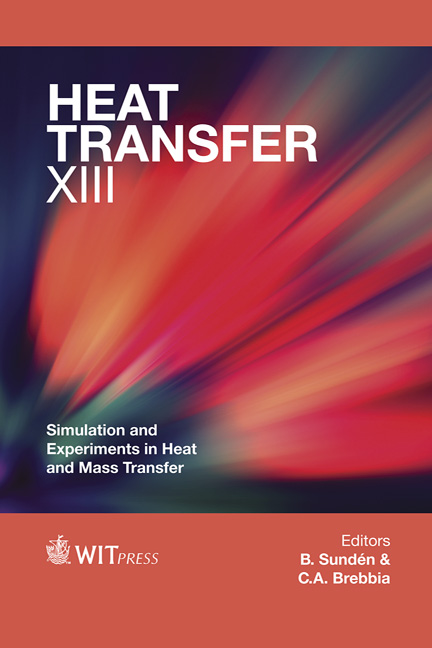A Concept For The Integrated 3D Flow, Heat Transfer And Structural Calculation Of Compact Heat Exchangers
Price
Free (open access)
Transaction
Volume
83
Pages
13
Page Range
133 - 145
Published
2014
Size
4483 kb
Paper DOI
10.2495/HT140131
Copyright
WIT Press
Author(s)
F. Yang, K. Mohrlok, U. Schaeffer & R. Stier
Abstract
This article describes a concept and methodology for the modelling of compact heat exchangers with arbitrary flow arrangement. The new model enables integrated virtual testing including simulation of thermal and hydraulic performance, cavitation behavior, and thermal structural stresses. In order to limit the calculation cost, the problem solving is split into two steps: firstly the CFD turbulator characteristics will be determined with very fine geometric resolution for the heat transfer surface related micro physics; secondly the global CFD conjugate heat transfer will be calculated with a coarse mesh by use of the porous media concept. A key issue in the second step is the representation of the turbulator characteristics which are dependent on the arbitrary flow direction and the local Reynolds and Prandtl numbers. Unlike a usual porous media approach in which the turbulator solid is replaced, the global flow and heat transfer calculation is carried out here by use of the user-developed coding and the StarCCM+/StarCD model of conjugate heat transfer in anisotropic porous media. With the calculated temperature distribution in the structure used as loading, a thermal stress analysis can be performed to evaluate the thermo-mechanic fatigue life of heat exchangers. Measurement shows that the predicted heat transfer performance and the pressure losses with the described multi-scale calculation strategy compares well with the experimental data with a maximum deviation of about 10%. Keywords: liquid to liquid heat exchanger, multi scale calculation, turbulator properties in arbitrary flow direction, conjugate heat transfer in anisotropic porous media, thermal and hydraulic characteristics, thermal structural stresses, heat exchanger model, cavitation identification, CFD calculation, experimental validation.
Keywords
liquid to liquid heat exchanger, multi scale calculation, turbulatorproperties in arbitrary flow direction, conjugate heat transfer in anisotropicporous media, thermal and hydraulic characteristics, thermal structural stresses,heat exchanger model, cavita





